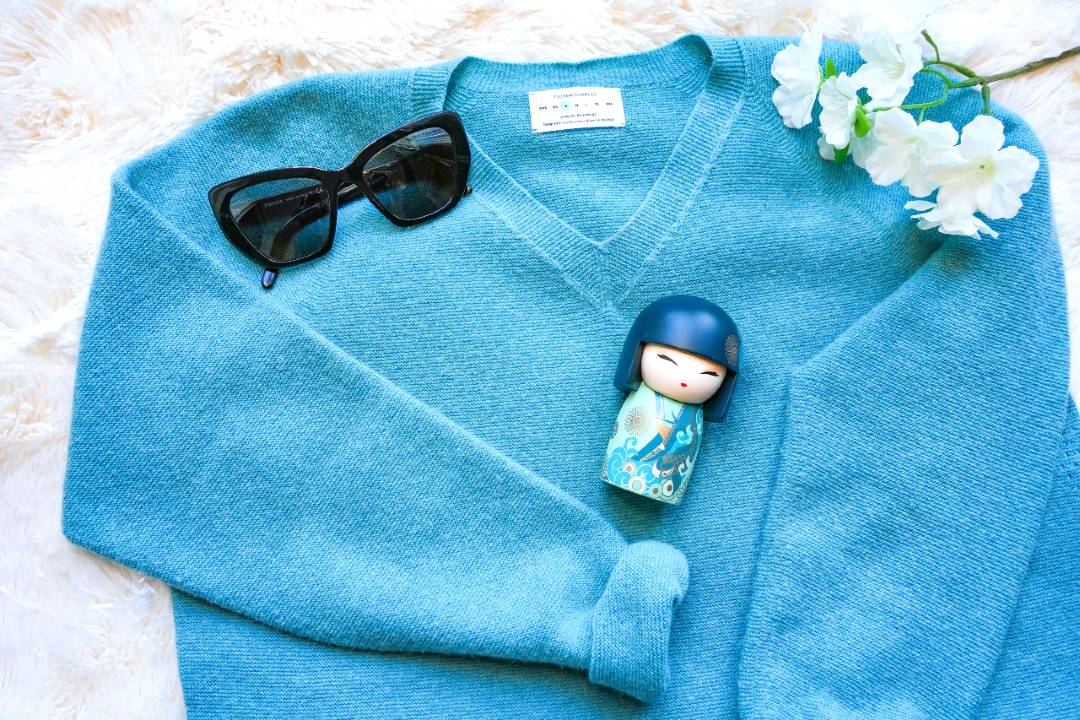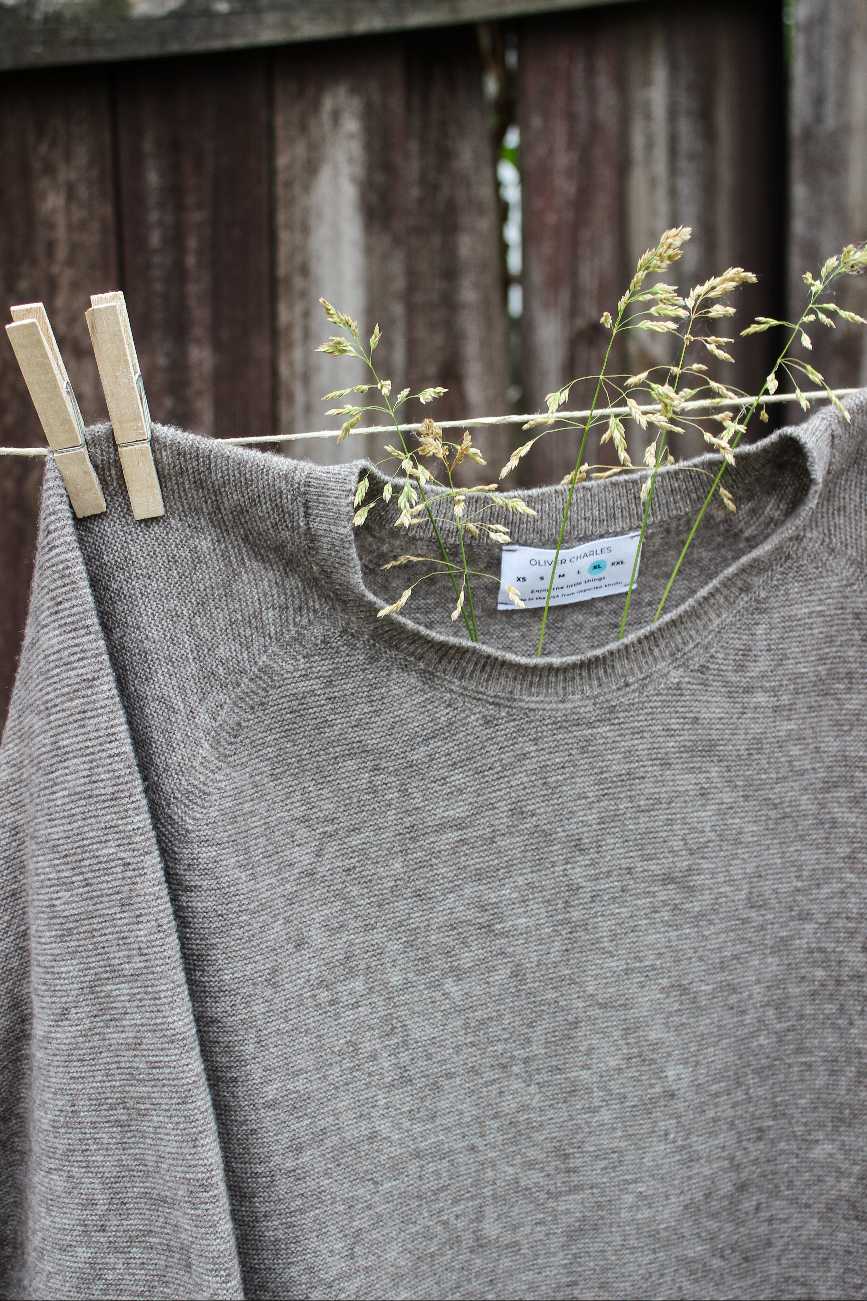How A Personal Uniform Fights Fast Fashion
I built a zero waste wardrobe by intertwining personal style and sustainability.
November 3, 2022
By Lauren Reitzel
How And Why I Moved Away From Fast Fashion
In this series, I’ll take the 1-Week Challenge and show how you can turn the clothes you already own and love into expressive styles and repeat outfits.
By the end, I hope to emphasize the importance and creative potential of outfit repeating and demonstrate the multifaceted nature of simple, durable pieces such as the Oliver Charles sweater.
----------
Throughout my life, I’ve always had a particular pull toward the fashion industry.
Filling my wardrobe with seemingly endless outfit possibilities excited me; the juxtaposition of a soft floral patterned linen paired with a hard-edged leather jacket and the ever-versatile pair of white cowboy boots. I’ve found my preoccupation with fashion only grew as I’ve gotten older.
I’ve been thinking a lot about my personal style and trying my best to commit to a sustainable closet.
Unfortunately, fast fashion made it easy to achieve the former, but supporting sustainable, ethically made clothes is much more challenging.
At this point in my life, I consider myself ‘fashionably stable’ enough to commit to higher-quality pieces that are built to be timeless and physically last a lifetime. Fashion stability is where identity, style, and what you own all work in harmony.
With fashion stability, I can feel comfortable investing my money into my personal style, brands, and pieces I know I’m going to love in the long term.
I’ve spent a lot of time learning about the dangers of fast fashion and how to pick sustainable brands that meet my goals.
I’ve found a few tips and tricks that helped me keep my personal style sustainable that I’ll share with you throughout my blog.

Environmental Impact of The Fashion Industry
Often without awareness and sometimes without care, we contribute to the perils of fast fashion.
Sources such as CNN and Columbia University's School of Climate reveal alarming statistics. These stats bring to light fast fashion's significant environmental footprint.
For example, the fast fashion industry has been proven to contribute to 10% of human-caused greenhouse gas emissions and 20% of global water waste.
To make it worse, less than 1% of clothing pieces are recycled to make new items, and as a result, 80% of clothing ends up in landfills or is incinerated, allowing for further methane to be produced and released into the atmosphere.
While these numbers are expected to rise in the coming years, there are steps that we can all take to individually do what we can to control the footprint that we’re leaving on the earth. A perfect example of an effort we can take is committing to shopping from sustainably made brands.

What You Should Wear Instead of Fast Fashion
As I transition into a more ethically and sustainably made closet, there are a few green flags I’ve started looking out for.
- Transparency: transparency about the sources of materials and the development of products is important when determining if that brand is truly sustainable. Check out how Oliver Charles sources Tibetan yak wool and SeaCell. Also, their 3D-knitting process creates seamless sweaters in Brooklyn, NY, without fabric waste!
- Labeling: prioritize products that are clear, straightforward, and do not withhold information. Sustainable brands should want to talk about their sourcing and production, so if this information is hard to find, it’s likely for a reason.
- Packaging: encourage brands to ship in biodegradable or recyclable packaging like the sustainably made paper tubes that my Oliver Charles sweater came in!
- Pricing: look for pricing that isn't motivated through discounts. Developing/producing sustainably made products typically do not feature cheaply made materials such as polyester or viscose and thus will cost more to purchase.

How To Keep Clothes Out Of The Landfill
By knowing about the true cost of fast fashion on the environment and what I can look out for to decrease my environmental impact, I can take meaningful steps forward toward a sustainable closet.
Such a large percentage of clothing ends up in a landfill. Thrifting allows us to buy clothing that would have otherwise been incinerated or left to become another one of the 80% of pieces discarded.
Thrifting is a great option, but if you are going to buy new, search for brands that create clothes that are versatile, durable, and comfortable. Oliver Charles is a brand I can trust to create clothes I’ll wear all the time for a long time, all while helping me build a closet full of style building blocks.
If you believe that every good wardrobe starts with owning less and owning better, consider buying yourself an OLIVER CHARLES sweater.
Shop NowA Perfect Fall Day In My 100% Yak Wool Cardigan
The sweater’s pockets were perfect for storing dog treats on my walk, making me new furry friends.
Read more7 Day Challenge: One Yak Wool Vest Simplified My Entire Week
An honest review of the Cardigan Vest from a busy and pregnant toddler mom.
Read more5 Adventure Challenge: Rediscovering Style In Simplicity
Trying out my new sustainable sweater for 5 adventures.
Read more



